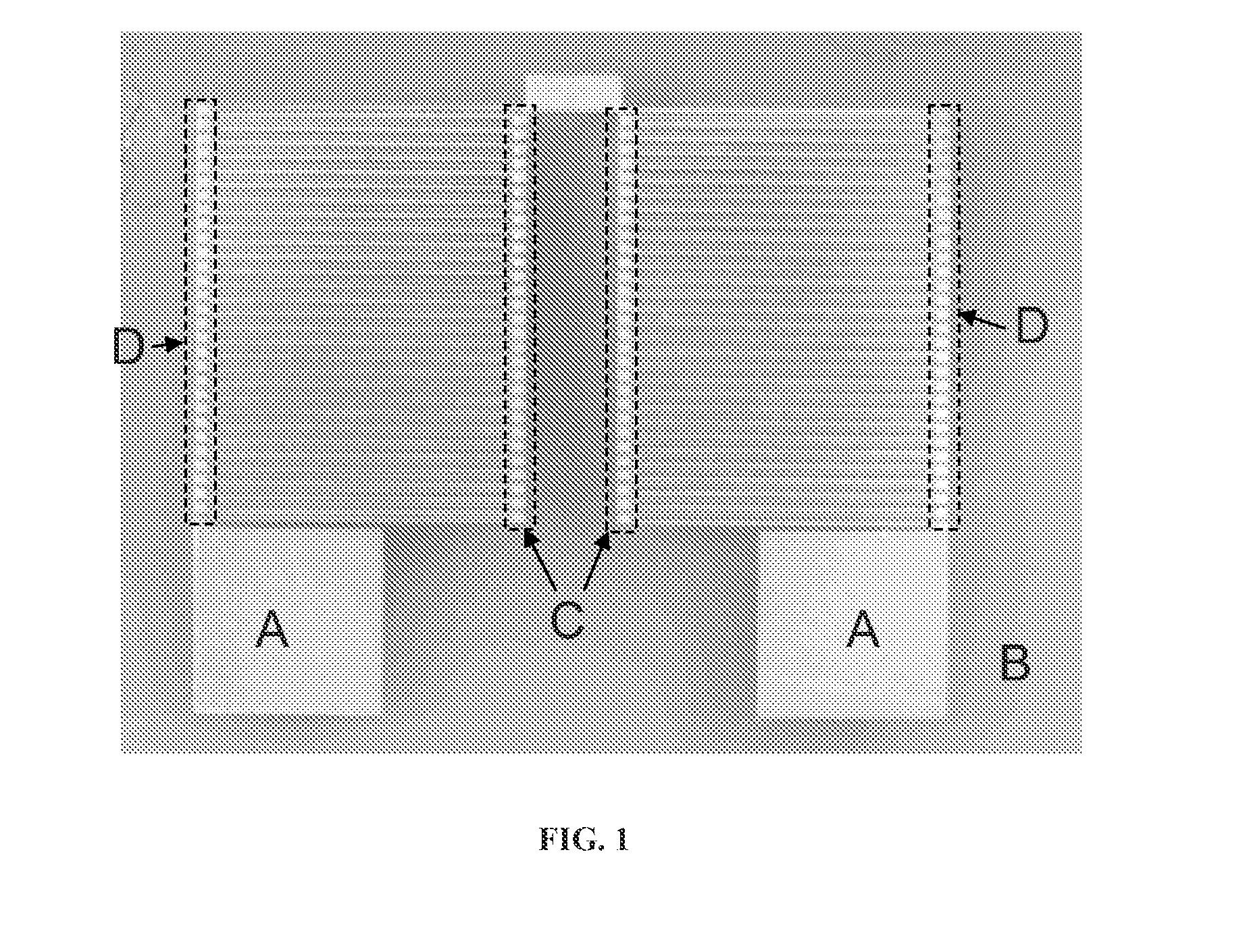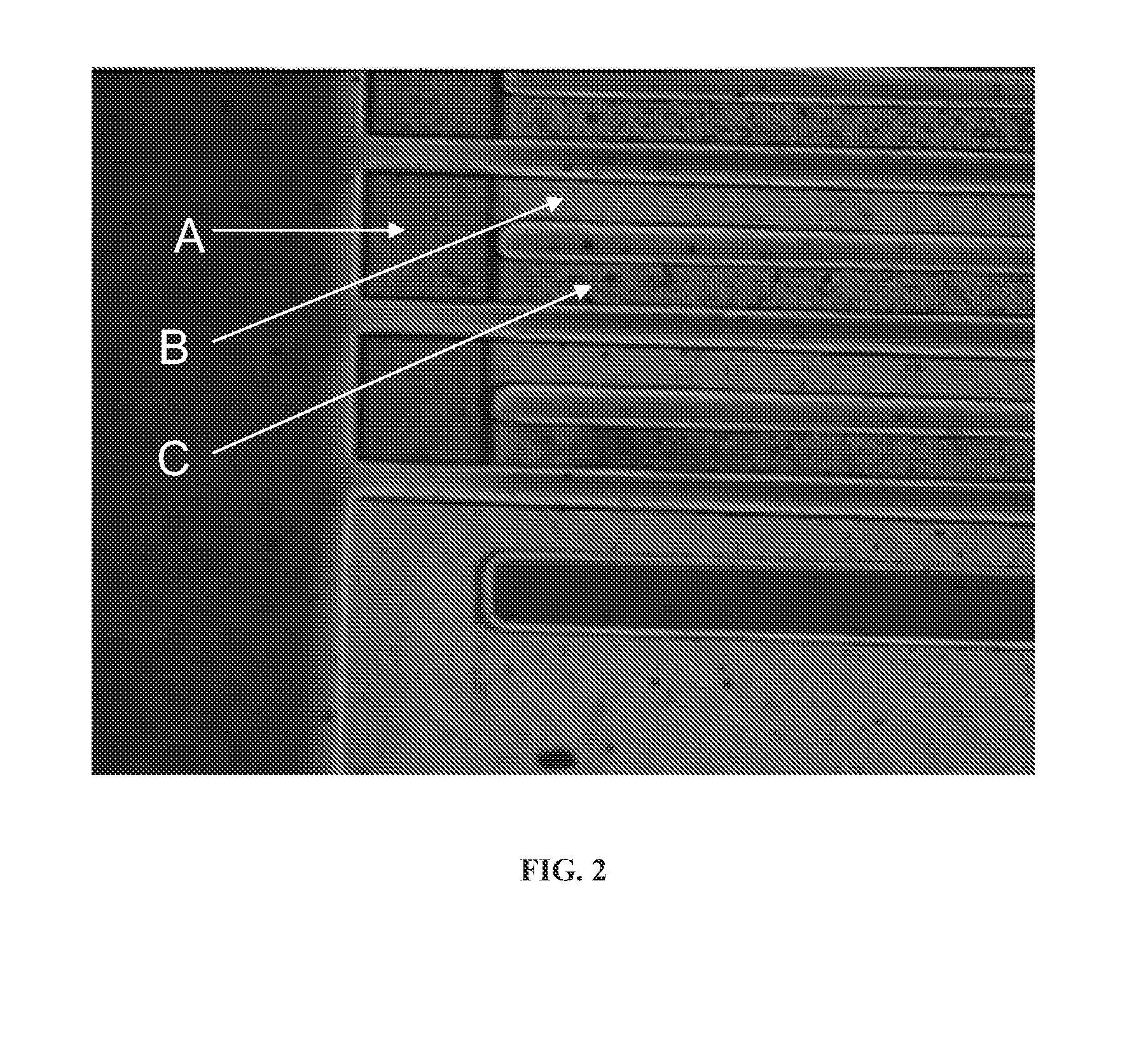[0012]In general, the present invention provides methods for sequencing nucleic acids wherein the nucleic acid to be sequenced acts as a template for the production of a complementary nucleic acid
polymer by a
polymerase enzyme. Methods of the present invention eliminate many of the disadvantages of the other detection methods and provide simple, inexpensive means of rapid determination of nucleic acid sequences. The present invention further provides methods employing a thermoelectric
thermopile, such as a thin-film thermopile, for the sequencing of nucleic acids. The
rapid response time of thin-film thermoelectric methods as described herein is another
advantage over traditional microcalorimetric methods for measuring small amounts of
thermal energy.
[0015]Yet another general aspect of the present invention contemplates a method of sequencing a nucleic acid comprising: (a) obtaining a primer-hybridized nucleic acid template, wherein the primer comprises a 3′ end; (b) exposing the template to a liquid flowing under conditions of laminar flow, wherein the liquid comprises a
polymerase and a known
deoxynucleoside triphosphate; (c) measuring heat generated or difference in temperature, if any, as detected by at least one thin-film thermopile comprising at least one first junction and at least one second junction, wherein the heat generated or the difference in temperature between the first and second junctions indicates incorporation of the known
deoxynucleoside triphosphate into the 3′ end of the primer; and either (d) upon detecting heat or a difference in temperature, identifying the nucleotide of the template that is complementary to the known
deoxynucleoside triphosphate incorporated into the primer, or (e) upon failing to detect heat or a difference in temperature, eliminating the possibility that the nucleotide that is complementary to the known deoxynucleoside triphosphate is present in the template at the 3′ end of the primer.
[0025]Another general aspect of the present invention contemplates a method of sequencing a nucleic acid comprising: (a) introducing a primer-hybridized nucleic acid template into the flow channel of any apparatus as described herein, such as the apparatus comprising (a), (b) and (c) in the
paragraph immediately above; (b) introducing a liquid comprising a polymerase and a known deoxynucleoside triphosphate into the flow channel of the apparatus; and (c) subjecting the liquid to conditions of laminar flow. Thin-film thermopiles as described herein may be employed in such methods. In certain embodiments, the thin-film thermopile of the apparatus comprises at least one measuring junction and at least one reference junction. Such methods may further comprise (d) measuring heat generated or a
temperature difference between the measuring junction and the reference junction and either: (e) upon detecting the heat generated or a difference in temperature, identifying the nucleotide of the primer-hybridized nucleic acid template that is complementary to the known deoxynucleoside triphosphate incorporated into the primer; or (f) upon failing to detect heat or a difference in temperature, eliminating the possibility that the nucleotide that is complementary to the known deoxynucleoside triphosphate is present in the template at the 3′ end of the primer. Steps (b)-(f) in this method may, in certain embodiments, be repeated at least once. Liquids employed in this or any other embodiment described herein may further comprise a
pyrophosphatase.
[0029]The thermoelectric sequencing methods described herein offer many advantages over other known sequencing methods, such as enzymatic
Pyrosequencing methods that are used to detect the presence of
pyrophosphate (PPi). For example, certain thermoelectric sequencing methods of the present invention do not rely on the chemical detection of PPi and thus, the need to conduct the polymerase reaction in a
reaction chamber of finite volume is eliminated. The present thermoelectric sequencing methods may reduce the number of reagents needed for sequencing because the
chemical agents for PPi detection (ATP-sulfurylase,
luciferin, and
luciferase) may be eliminated. The present thermoelectric sequencing methods replace the expensive photodetectors needed for measurement of the small amount of light emitted in the ATP
luciferin reaction of current
Pyrosequencing methods with inexpensive, simple,
voltage measuring circuits for detection of the self-generated
electric signal from a thermopile. Such electric circuits are easily fabricated with modern semi-conductor fabrication processes and can be miniaturized. As a result, thermoelectric sequencing methods of the present invention may be adapted for
miniaturization in, for example, microfluidic systems. No power is needed to generate the thermoelectric
signal produced by the thermopile.
[0030]It is thus an object of the present invention to provide a simple, inexpensive method of
nucleic acid sequencing in which the
rate limiting step is the rate at which nucleotides can be made available for the polymerase reaction or the rate of the polymerase reaction. It is also an object of the present invention to provide
nucleic acid sequencing methods that do not require the use of dNTP analogs, or require expensive enzymes, fluorescent dyes, intercalating dyes, cleavable tags, chemiluminescent tags, fluorescent tags,
photobleaching, or other labels, or the use of expensive and complex microcalorimeters,
light detection equipment, or radiographic detection strategies.
[0032]Yet another object of the present invention is to provide a method of sequencing nucleic acids that provides improved
signal-to-
noise ratio of the detection means (which can be very low in optical detection methods) without the need to remove or neutralize a
label or tag on an added nucleotide.
 Login to View More
Login to View More 


